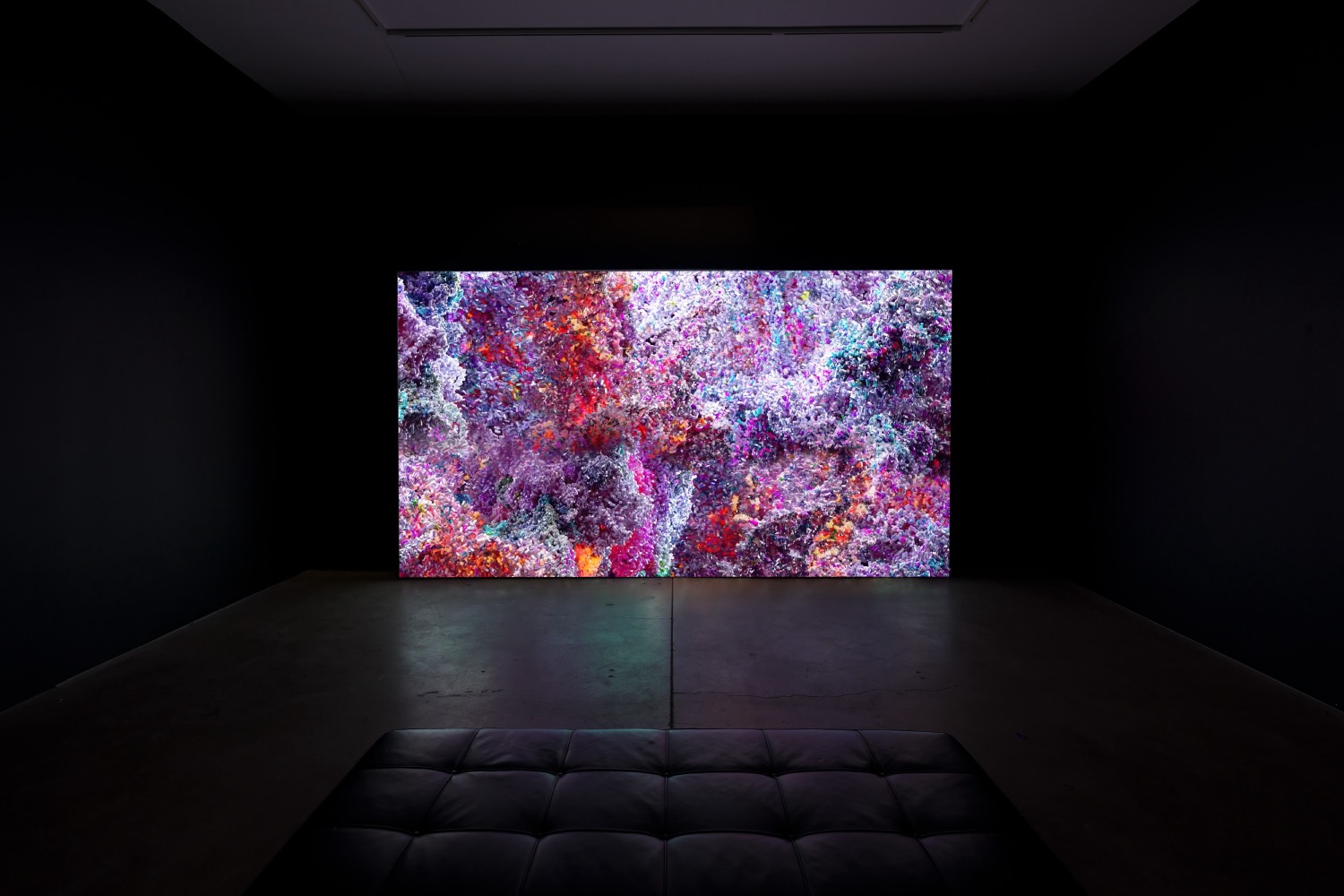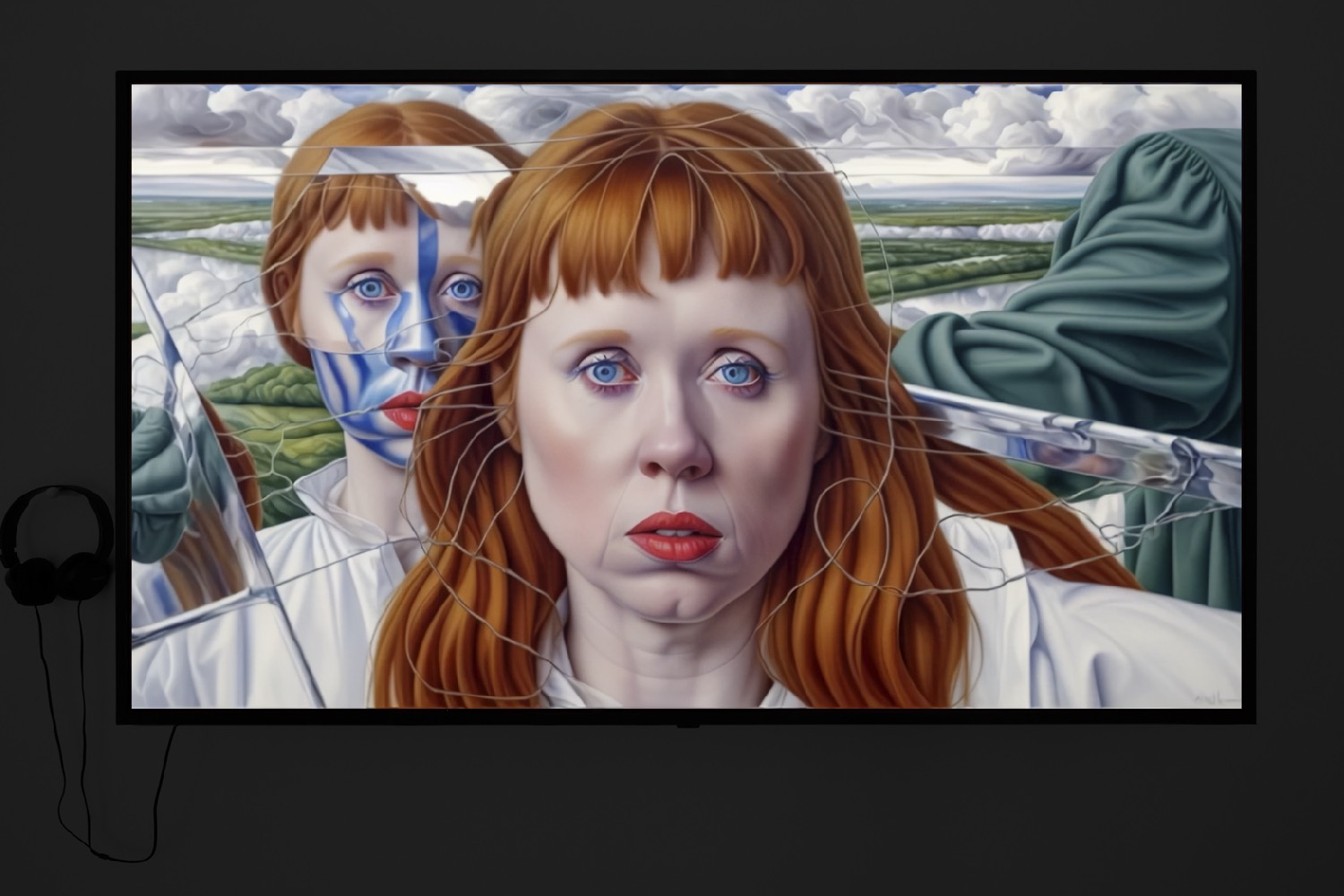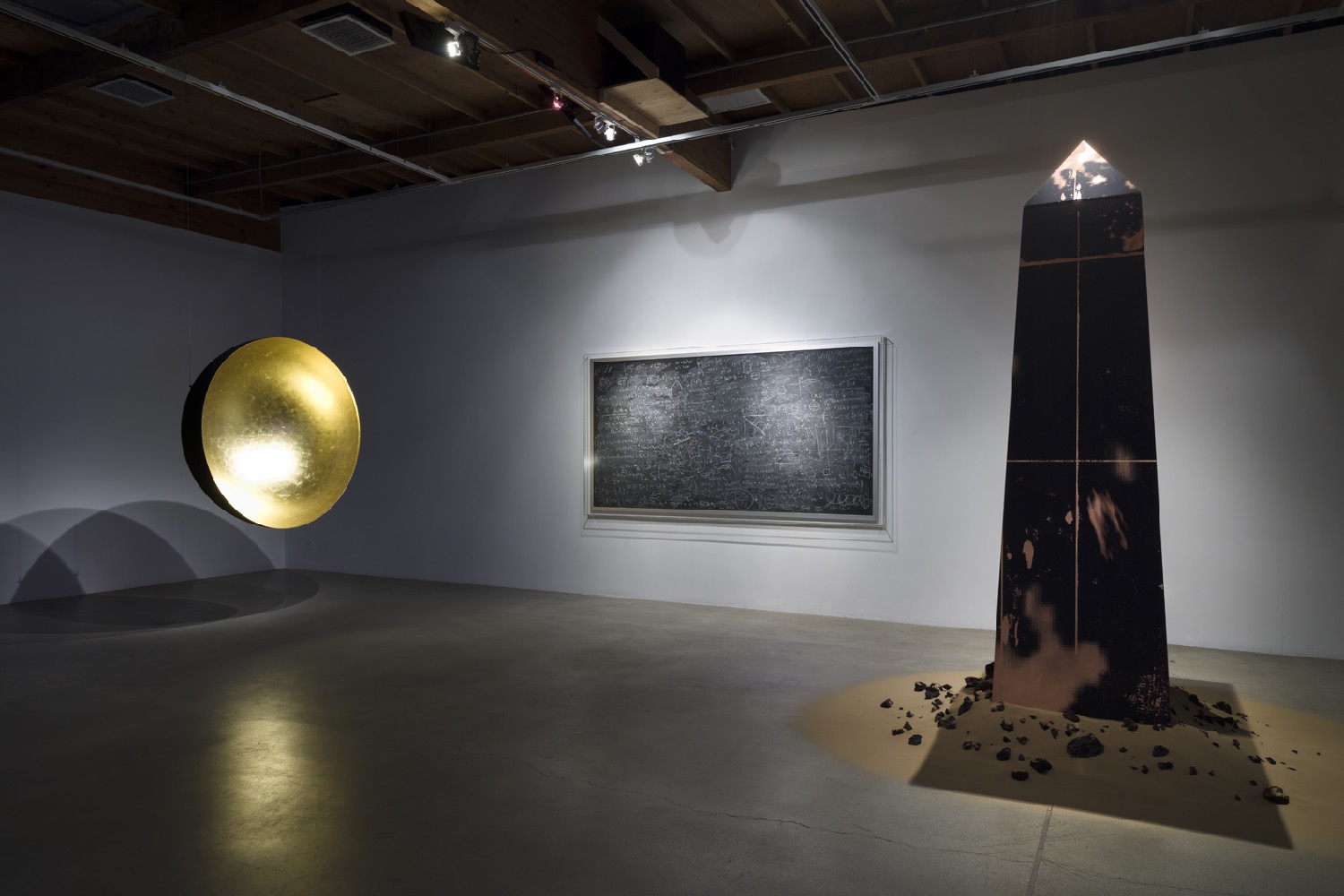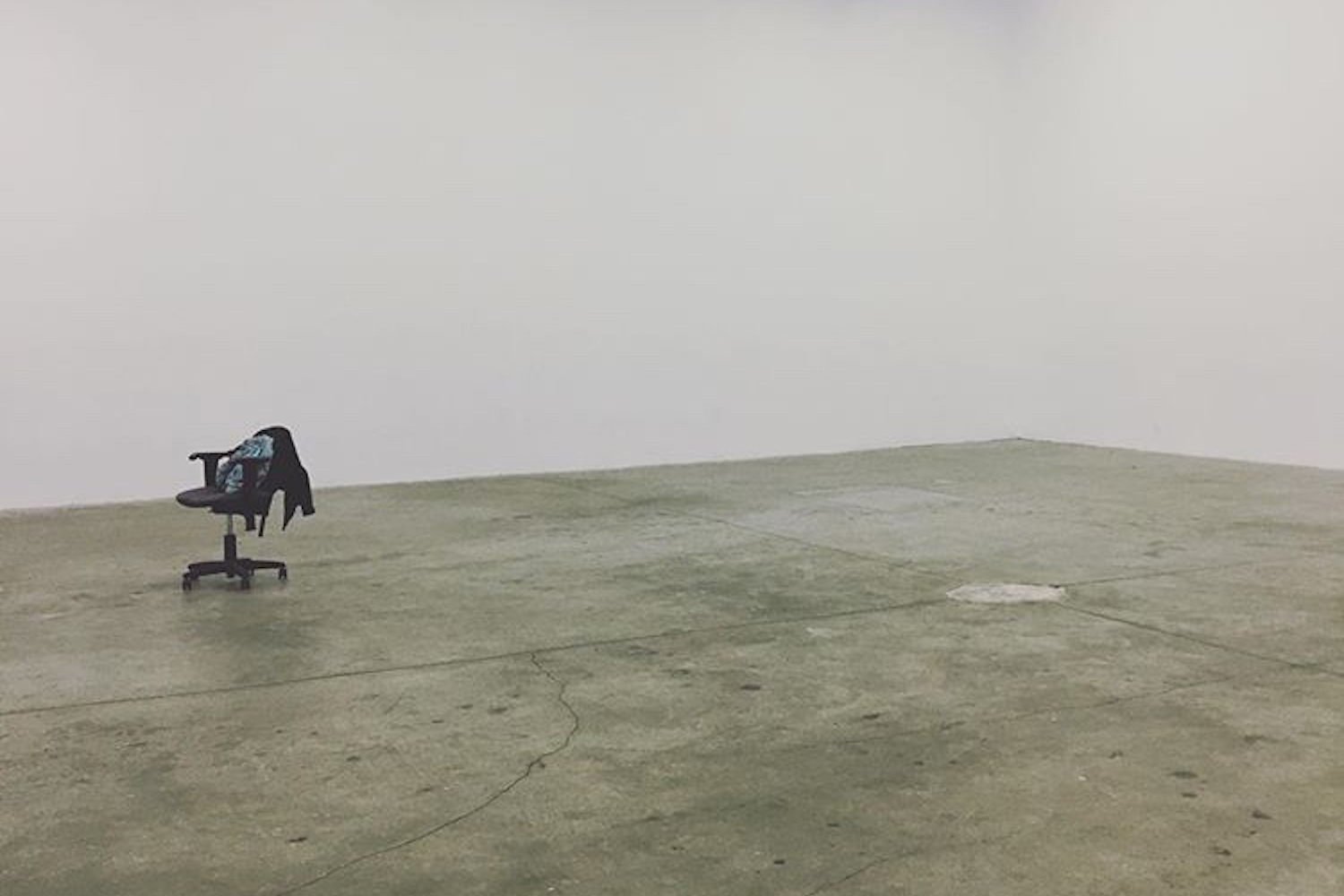It is well known by now that artificial intelligence can speak, paint, and film, now, too: pictures of any form and character, ersatz and odd as they may be. Its eventual command of the arts is no longer in question. What remains to be answered is whether the artist’s voice can still be heard above its multitudinous outputs. Can art made with AI animate us and bring our stories to life? These are the questions posed by “SMALL VO1CE,” an exhibition curated by Jesse Damiani at Honor Fraser, Los Angeles. The show gathers future-focused artists in the collective inquiry of AI’s creative potential. Its artists are challenged to generate novelty by imposing their intentions on systems that are ultimately trained to predict and reproduce mass-media — in other words, kitsch machines. It’s an inherently difficult task.
In the main gallery, Holly Herndon and Mat Dryhurst take the spot of honor. They’re a collaborative duo with an authoritative voice in AI art who are participating in the upcoming Whitney Biennial. Their film I’m here 17.22.2022 5:44 (2023) is the product of customized AI that uses the faces of Herndon and her infant son. The surreal, shapeshifting piece follows the artist’s heartfelt retelling of her coma-induced dream in the aftermath of her son’s birth. The video visualizes the baby as a singing soloist against a chorus of its own doppelgangers, Herndon playing conductor, a hospital scene, and a staircase to heaven. The artists attempt to use AI to turn her story into art, but the computer’s cruel indifference and predictability create a stilted video that’s out of sync with Herndon’s bittersweet audio. It cleanses the piece of her pain: This is an experiment with AI in failure mode.
Other image-based works dance around remixing visual tropes we’ve all seen before. Sara Ludy’s expressionist “Haunted Hot Dog Cart” paintings (2022) are copies of AI-generated images prompted by said title. This reversal transforms Ludy into the mere mechanism by which AI materializes itself in acrylic, but with a tongue-in-cheek self-awareness that sort of works. Minne Atairu prompts a hyper-realistic AI portrait of an African water deity in Portrait of Mami Wata (2023), but the image reads like a technical demonstration of AI’s hyper-realist capabilities. I would be more interested to read Atairu’s textual prompt than look at the image itself. Memo Atken’s video Journey through the watched over meditations (2024) is a series of cybernetic mushroom trips that zoom in and out of kaleidoscopic worlds that grow out of the artist’s face as Atken’s voice mythologizes AI as an “Overseer” that replaces a defeated Old God. It’s cool, but unoriginal and unfocused — Atken is throwing spaghetti at the wall to see what sticks. This characterizes many AI artworks, which makes parts of the show feel like an exhibition of stock footage. Ludy’s goofy hot dog carts are a little nod and a wink to that fact. Are we witnessing the foreclosure of the artist’s desire, nay ability, to figure an image for themselves?
Caroline Sinders’s Becoming Unreadable, Experiment 1 (2024) moves in the opposite direction. The artist attempts to obscure the subject of their photograph of an offshore oil rig from the view of a computer vision model. Sinders carefully applies strokes of white paint over and around the oil rig as the algorithm updates its estimation of the photo, calculating its various qualities: “water: 0.98; petroleum: 0.79.” Sinders’s goal reveals itself: we see that she’s not just evading the machine’s eye; she’s making a new future as she successively erases the oil rig. This is the artist’s voice grappling with AI as a peer, not a user.
The adjoining gallery centers on Landon Ross’ Event Horizon (2024), an installation that juxtaposes a six-foot blackened copper obelisk against a hanging, gold-foiled, hollow half-sphere. A blackboard filled with obscure mathematical equations (Untitled Hieroglyphs, 2024) backgrounds the pair. Ross imagines AI as a black hole that sucks in information caught in its orbit, compressing humanity through mathematical hubris into a singular, unknowable point. This “point” confounds human understanding, and projects pure chaos back to us: an uncontrolled radiation that we must shield ourselves from or learn to harness, and quickly. It’s an apt metaphor for artificial intelligence, which, like the laws of black holes and dark matter, researchers can’t explain the inner workings of.
Making and exhibiting AI art is a great challenge, and “SMALL V01CE” tackles it honorably. But if “SMALL V01CE” represents artists’ best attempts at controlling AI, their experiments yield a definitive result: it cannot be controlled. Its powers of creation are seductive, but it makes servants out of artists, hemming their work within its own vision for what human art “should” look like. The technical novelty of AI takes the foreground while simultaneously leaving us bored, lost somewhere between kitsch and the uncanny valley. It’s no surprise, then, that the best of them go to combat with generated images, and take on AI as a challenge, rather than a solution.






